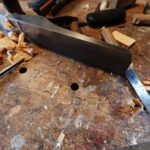Woodwork refers to any items made of wood, including furniture, trim, molding, and other decorative elements. The importance of cleaning woodwork cannot be overstated, as regular maintenance not only preserves the beauty of the wood but also extends its longevity.
Different types of woodwork require specific cleaning solutions and techniques to ensure they are properly cared for and maintained. In this article, we’ll explore the best cleaning options for various types of woodwork and provide tips on how to choose the right solution based on the type of wood and finish.
When it comes to cleaning woodwork, one common question that arises is: what is the best thing to use to clean woodwork? This depends on factors such as the type of wood and finish, which will determine the most suitable cleaning solution. From natural cleaners like vinegar, lemon juice, and olive oil to commercial wood cleaners and DIY recipes, there are various options available for effectively cleaning different types of woodwork.
Understanding how to properly care for your woodwork is crucial in maintaining its appearance and functionality. By exploring the different cleaning solutions, tips for choosing the best option, tools for cleaning, a step-by-step guide for cleaning your woodwork properly without damaging it or causing harm to yourself or others can help maximize the lifespan of your wooden items.
Let’s delve into all facets of how to clean various types of woodwork in order to maintain its appearance and integrity effectively.
Different Cleaning Solutions for Woodwork
When it comes to cleaning woodwork, there are various options available to ensure that your wood surfaces remain clean and well-maintained. From natural cleaners to commercial wood cleaners, and even DIY solutions, finding the best cleaning solution for your specific type of woodwork is essential. The following section will explore the different cleaning solutions available and how to determine which one is best for your needs.
Natural Cleaners
For those who prefer a more environmentally-friendly approach, natural cleaners such as vinegar, lemon juice, and olive oil can be effective options for cleaning woodwork. Vinegar and lemon juice are known for their ability to cut through grease and grime, making them ideal for removing dirt and residue from wood surfaces. Meanwhile, olive oil can be used to condition and nourish the wood, leaving it with a lustrous finish.
Commercial Wood Cleaners
Commercial wood cleaners are specifically formulated to clean and protect various types of wood surfaces. These products are readily available at hardware stores and provide convenience for those who prefer a ready-to-use solution. Before purchasing a commercial wood cleaner, it’s important to check the label to ensure that it is suitable for the type of woodwork you have in your home.
DIY Wood Cleaner Recipes
For those who enjoy making their own cleaning solutions at home, there are various DIY recipes that can be used to clean woodwork effectively. Ingredients such as water, vinegar, essential oils, and baking soda can be combined to create homemade wood cleaner solutions that are safe and gentle on most types of wood.
It’s essential to research recipes that are suitable for the specific type of wood you intend to clean and always test any DIY cleaner on a small inconspicuous area first before using it on larger surfaces.
In considering what is best thing to use to clean woodwork, it’s important to assess the type of Woodwork as well as any potential allergies or sensitivities in order to select an appropriate cleaner solution. Whether you opt for natural cleaners, commercial products or DIY options, ensuring that your chosen cleaning solution is compatible with your specific type of Woodwork will help maintain its beauty and longevity over time.
Tips for Choosing the Best Cleaning Solution
When it comes to cleaning woodwork, choosing the right cleaning solution is essential for maintaining the beauty and longevity of the wood. With so many options available, it can be challenging to determine what is the best thing to use to clean woodwork. Here are some tips for choosing the best cleaning solution for your woodwork.
Consideration of the Type of Wood
Different types of wood may require different cleaning solutions. For example, hardwoods like oak or maple may be more resilient to certain cleaners compared to softwoods like pine or cedar. It’s important to consider the type of wood when selecting a cleaning solution to avoid any potential damage.
Understanding the Finish of the Woodwork
The finish on your woodwork, whether it’s varnished, painted, or stained, will also play a role in determining the best cleaning solution. Some finishes may be more sensitive to certain cleaners, so it’s important to understand the specific finish of your woodwork before choosing a cleaning solution.
Potential Allergies or Sensitivities
It’s important to take into account any potential allergies or sensitivities when selecting a cleaning solution for your woodwork. Some commercial cleaners may contain harsh chemicals that can aggravate allergies or sensitive skin. Natural cleaners or DIY recipes can be a great alternative for those with sensitivities.
By considering these factors, you can ensure that you are choosing the best cleaning solution for your specific type of woodwork and maintain its beauty and integrity for years to come.
Tools for Cleaning Woodwork
When it comes to cleaning woodwork, choosing the right tools is just as important as choosing the right cleaning solution. The tools you use can greatly impact the outcome of the cleaning process and the overall condition of your woodwork. Here are some essential tools for effectively cleaning woodwork:
Soft cloths are a must-have when it comes to cleaning woodwork. These cloths are gentle enough to avoid scratching or damaging the surface of the wood, yet effective in picking up dust and debris. Microfiber cloths, in particular, are great for capturing and trapping dirt and dust particles, making them an excellent choice for wiping down woodwork.
A soft-bristled brush is another valuable tool for cleaning woodwork, especially for intricate or hard-to-reach areas such as carved details or crevices in trim and molding. The soft bristles help agitate and dislodge dirt without causing any damage to the wood surface.
Using a vacuum with a brush attachment can be helpful in removing loose dirt and dust from woodwork, especially on furniture upholstery or intricate carvings. The brush attachment allows you to gently lift off debris without scratching or scuffing the wood.
In addition to these tools, it’s important to have a good quality wood cleaner that is suitable for the type of woodwork you are cleaning. Ultimately, using the right tools in combination with an appropriate cleaning solution will ensure that your woodwork is not only clean but also well-maintained for years to come.
Whether you are dealing with furniture, trim, molding, or any other type of woodwork, having the right tools at your disposal is essential for achieving a clean and polished finish. When deciding what is the best thing to use to clean woodwork, consider incorporating these tools into your cleaning routine for optimal results.
Step-by-Step Guide for Cleaning Woodwork
Cleaning woodwork is an essential part of maintaining the beauty and longevity of your wooden furniture, trim, molding, and other wood surfaces. Using the right cleaning solution and tools can help keep your woodwork looking its best. Here are some steps to follow when cleaning your woodwork:
1. Preparation: Before you begin cleaning, remove any dust or debris from the woodwork using a soft cloth or a vacuum with a brush attachment. This will prevent scratching the surface during the cleaning process.
2. Application of Cleaning Solution: Depending on the type of wood and finish, choose a suitable cleaning solution. For natural options, a mixture of vinegar and water works well for light cleaning, while a commercial wood cleaner may be necessary for tougher stains.
3. Gently Scrubbing and Wiping: Apply the cleaning solution to a soft cloth or soft-bristled brush and gently scrub the woodwork in circular motions to remove dirt and grime. Avoid using harsh chemicals or scrubbing too vigorously to prevent damage to the wood surface.
4. Drying and Buffing: After scrubbing, use a clean, dry cloth to wipe away any remaining moisture from the surface of the woodwork. Then, buff the surface with another cloth to restore its shine.
Following these steps will help ensure that your woodwork is thoroughly cleaned without causing any damage. It’s important to choose the right cleaners and tools for your specific type of woodwork in order to maintain its beauty for years to come.
Remember that regular maintenance is key in preserving the appearance and condition of your woodwork. By following these steps and incorporating regular cleaning into your routine, you can keep your wooden surfaces looking their best for years to come.
Whether it’s furniture, molding, or trim, knowing how to properly care for your woodwork will make it last longer and stay beautiful. Regular dusting as part of routine maintenance goes a long way in keeping your pieces looking great.
Applying polish or conditioner at least once every few months can also help protect against wear-and-tear over time; just be sure not to over-apply.
Additionally, it’s crucial that you keep exposure limited when it comes different elements-make sure you don’t place anything next direct sunlight exposure; this includes both light & heat factors because they could warp or fade certain types woods prematurely-from moisture-related issues like warping which could cause further damage if left unchecked.
Common Mistakes to Avoid When Cleaning Woodwork
When it comes to cleaning woodwork, it is important to avoid common mistakes that can potentially damage the wood and its finish. One of the most frequent errors people make is using harsh chemicals that can be too abrasive for certain types of wood.
Instead, it is best to opt for gentle and natural cleaning solutions to preserve the integrity of the wood. Another mistake to avoid is scrubbing too vigorously, which can lead to scratching or wearing down the finish of the woodwork.
In addition to avoiding harsh chemicals and vigorous scrubbing, it is crucial not to neglect testing a new cleaning solution on a small, inconspicuous area of the woodwork first. This will help determine if the solution is safe and effective for the specific type of wood and its finish. Testing a small area also allows you to assess if there are any adverse reactions, such as discoloration or damage, before applying the cleaner to the entire surface.
To prevent common mistakes when cleaning woodwork, it is essential to use gentle methods and test new cleaning solutions before full application. By avoiding harsh chemicals and vigorous scrubbing, you can maintain the beauty and longevity of your woodwork for years to come.
| Common Mistakes | How to Avoid |
|---|---|
| Using harsh chemicals | Opt for gentle and natural cleaning solutions |
| Scrubbing too vigorously | Employ gentle methods for cleaning |
| Neglecting to test new solutions | Prioritize testing on a small area first |
How to Maintain and Preserve Woodwork
Woodwork, whether in the form of furniture, trim, molding, or other wooden surfaces, requires regular maintenance and care to preserve its beauty and longevity. This section will provide a guide on how to maintain and preserve woodwork effectively.
Tips for Maintaining and Preserving Woodwork
When it comes to maintaining woodwork, there are several important tips to keep in mind:
- Regular dusting and wiping: Use a soft cloth or microfiber cloth to regularly dust and wipe down wood surfaces. This helps prevent the buildup of dirt and grime.
- Applying wood polish or conditioner: Periodically applying wood polish or conditioner can help nourish the wood, enhance its natural beauty, and protect it from drying out.
- Protecting from sunlight and moisture: Position woodwork away from direct sunlight to prevent fading and damage. Additionally, make sure to protect woodwork from excess moisture to avoid warping or mold growth.
By following these simple yet effective maintenance tips, you can prolong the life of your woodwork and keep it looking its best for years to come.
Remember that understanding the type of wood, the finish of the woodwork, and any potential allergies or sensitivities should also be considered when choosing cleaning solutions and maintenance products. Overall, regular care is essential for preserving the natural beauty of woodwork.
Conclusion
In conclusion, when it comes to cleaning woodwork, choosing the best cleaning solution depends on various factors such as the type of wood and its finish. Natural cleaners like vinegar, lemon juice, and olive oil can be effective and safe options for many types of woodwork. Commercial wood cleaners provide convenience and are specifically formulated to clean and protect wood surfaces. DIY wood cleaner recipes offer a customizable and cost-effective alternative for those who prefer natural ingredients.
It is important to consider the specific needs of your woodwork when selecting a cleaning solution. Understanding the type of wood, its finish, and any potential allergies or sensitivities will help you make the best choice for cleaning. Additionally, using the right tools such as soft cloths, soft-bristled brushes, vacuums with brush attachments, and microfiber cloths can ensure a gentle yet thorough cleaning process.
Regular maintenance is crucial for preserving the beauty and longevity of woodwork. By following recommended cleaning practices and avoiding common mistakes such as using harsh chemicals or scrubbing too vigorously, you can maintain and protect your woodwork effectively. Ultimately, maintaining your woodwork not only enhances its appearance but also contributes to its durability over time.
Frequently Asked Questions
What Is the Best Solution to Wash Woodwork With?
The best solution to wash woodwork with is a mixture of mild dish soap and warm water. This gentle yet effective solution helps to remove dirt and grime without damaging the wood.
What Is the Best Cleaning Solution for Wood Trim?
When it comes to cleaning wood trim, the best solution is a mix of white vinegar and water. This natural cleaning solution is safe for the wood surface and effectively eliminates built-up dust and grease.
What Is the Best Substance to Clean Wood With?
The best substance to clean wood with is a combination of olive oil and white vinegar. This homemade cleaner not only gets rid of dirt and grime but also leaves the wood nourished and looking shiny.

Hi everyone! I’m a woodworker and blogger, and this is my woodworking blog. In my blog, I share tips and tricks for woodworkers of all skill levels, as well as project ideas that you can try yourself.





